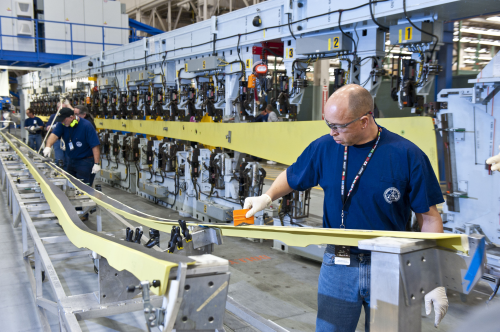
Boeing has begun building the first Next-Generation 737 at the program’s new production rate of 35 airplanes a month. The rate is increasing from 31.5 airplanes a month to meet worldwide market demand for the best-selling single-aisle airplane.Boeing has taken a three-fold approach to prepare for the rate increases on the 737 program by: making production processes more efficient by working with employee process improvement teams; increasing the production capacity with capital investments, such as a new wings system installation line in the Renton factory; and making the site footprint more efficient by moving some production areas, expanding others and decommissioning outdated equipment.The automated spar assembly tool used to build the first spar is the ninth such machine at the Renton factory, drilling about 1,700 holes and inserting fasteners to make the spar. The tool increases the 737’s wing-building capacity and is an example of one of many facilities changes happening at the Renton site to increase capacity and prepare for rate increases.The 737 production rate will increase to 38 airplanes a month in the second quarter of 2013 and to 42 airplanes a month in the first half of 2014.Earlier this month Boeing released a forecast that predicted air carriers in North America will take delivery of 7,530 new airplanes over the next 20 years at a market value of $760 billion. This demand, according to the manufacturer, is being driven by the need to replace aging aircraft with new, more fuel-efficient airplanes. Taking retirements of airplanes into account, the North America fleet will grow from 6,610 airplanes today to about 9,330 airplanes by 2030.
